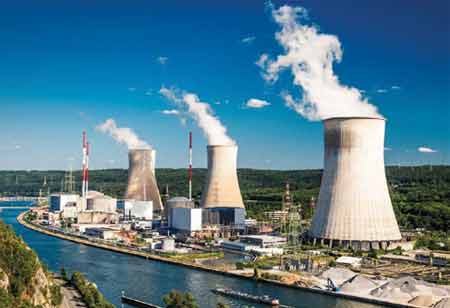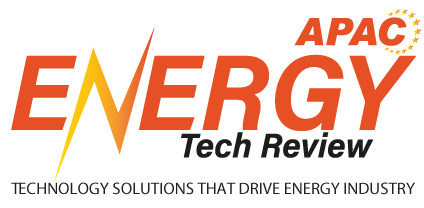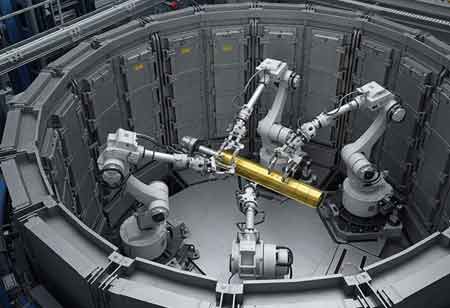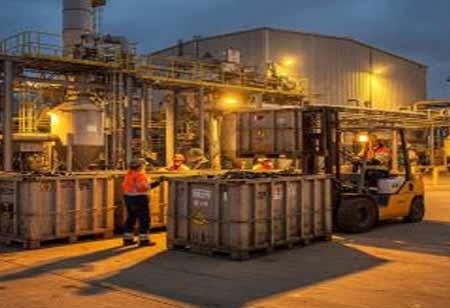CLOSE
Specials
I agree We use cookies on this website to enhance your user experience. By clicking any link on this page you are giving your consent for us to set cookies. More info
Be first to read the latest tech news, Industry Leader's Insights, and CIO interviews of medium and large enterprises exclusively from Energy Tech Review
Thank you for Subscribing
The Adoption of Dry Cooling in APAC's Power Sector
APAC's power sector is transitioning to dry cooling technologies due to stringent water regulations, advancing sustainability efforts amid rising water scarcity and environmental pressures.

By
Energy Tech Review | Friday, June 20, 2025
Stay ahead of the industry with exclusive feature stories on the top companies, expert insights and the latest news delivered straight to your inbox. Subscribe today.
Fremont, CA: The Asia-Pacific (APAC) region, a global powerhouse of economic growth and industrialization, is experiencing a fundamental shift in its power generation landscape. This transformation is driven by mounting regulatory pressures that prioritize environmental sustainability, particularly concerning water consumption. As a result, power producers across APAC are increasingly turning to dry cooling solutions, moving away from traditional water-intensive methods.
The Intensifying Regulatory Climate in APAC
Governments across APAC are implementing and strengthening environmental regulations, with a pronounced focus on water resource management. This trend is a direct response to the escalating water scarcity issues, which are exacerbated by climate change, rapid urbanization, and increasing agricultural demands. Many regions are facing heightened water stress, making it imperative for industries, especially the power sector, to reduce their water footprint.
New and updated environmental protection acts and national water policies are emerging, setting stricter limits on water withdrawal and discharge for industrial operations, including thermal power plants. There is a growing emphasis on mandating the adoption of water-efficient technologies and promoting responsible water use across various sectors. Some regulations are exploring mechanisms to penalize excessive water consumption or provide incentives for water-saving initiatives. The overarching goal is to ensure long-term water security and mitigate the environmental impact of industrial activities.
The Inevitable Shift Towards Dry Cooling
In this evolving regulatory environment, dry cooling technologies are gaining significant traction as a viable and sustainable alternative to conventional wet cooling systems. Traditional cooling towers rely heavily on evaporative cooling, leading to substantial water losses. In contrast, dry cooling systems primarily use ambient air to dissipate heat, significantly reducing or even eliminating the need for water.
This fundamental difference makes dry cooling an option for power plants in water-stressed areas or those facing stringent water-use regulations. The technology minimizes the impact on local water sources, a crucial factor for obtaining environmental permits and ensuring long-term operational viability.
Technological Advancements and Adoption Trends
Continuous advancements in cooling technology are also facilitating the shift towards dry cooling. Innovations in air-cooled condenser (ACC) and air-cooled heat exchanger (ACHE) designs are improving efficiency and performance, even in challenging environmental conditions. Manufacturers are focusing on developing more compact, modular, and energy-efficient dry cooling solutions. The integration of advanced controls and monitoring systems is also enhancing the operational effectiveness of these systems, allowing for optimized performance and reduced energy consumption.
Across the APAC region, the adoption of dry cooling is becoming a prominent trend, particularly for new power plant constructions in water-scarce areas. Existing plants are also exploring retrofitting options to comply with evolving regulations and enhance their water sustainability profiles. While the initial investment for dry cooling solutions may be higher than that for traditional wet cooling, the long-term operational savings associated with reduced water consumption and treatment, coupled with regulatory compliance, are increasingly justifying this transition.
The growing demand for electricity in the APAC region, fueled by industrialization and urbanization, further underscores the need for sustainable power generation methods. As the area continues to prioritize environmental stewardship and resource conservation, the move toward dry cooling solutions is poised to accelerate, reshaping the power sector's cooling landscape in the years to come.

Copyright © 2025 Energy Tech Review. All rights reserved






